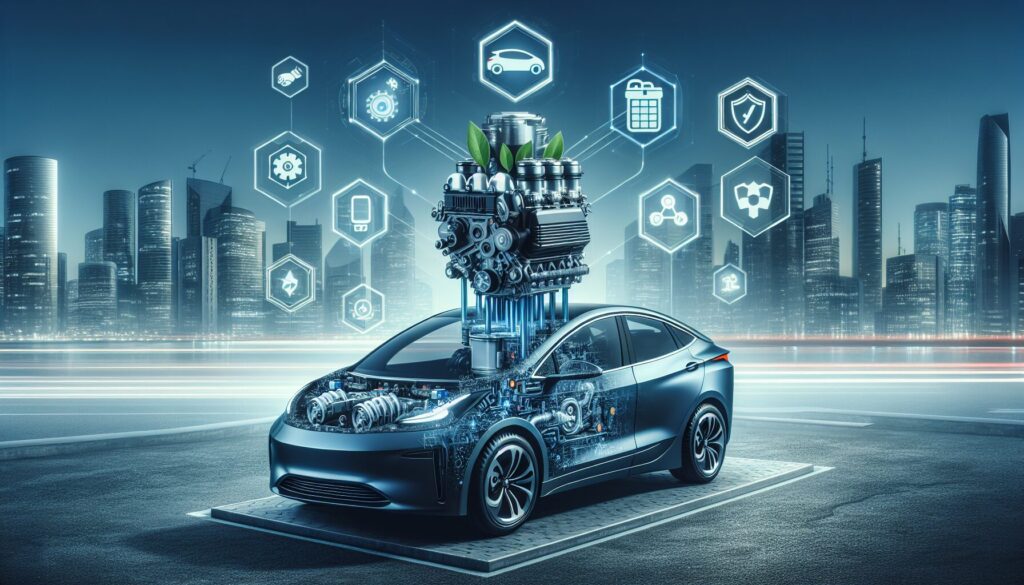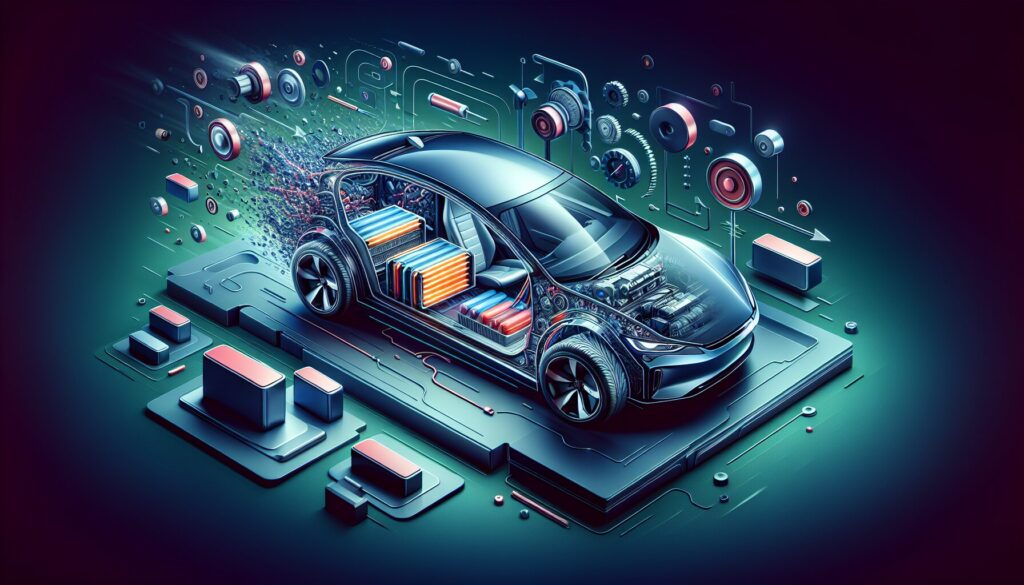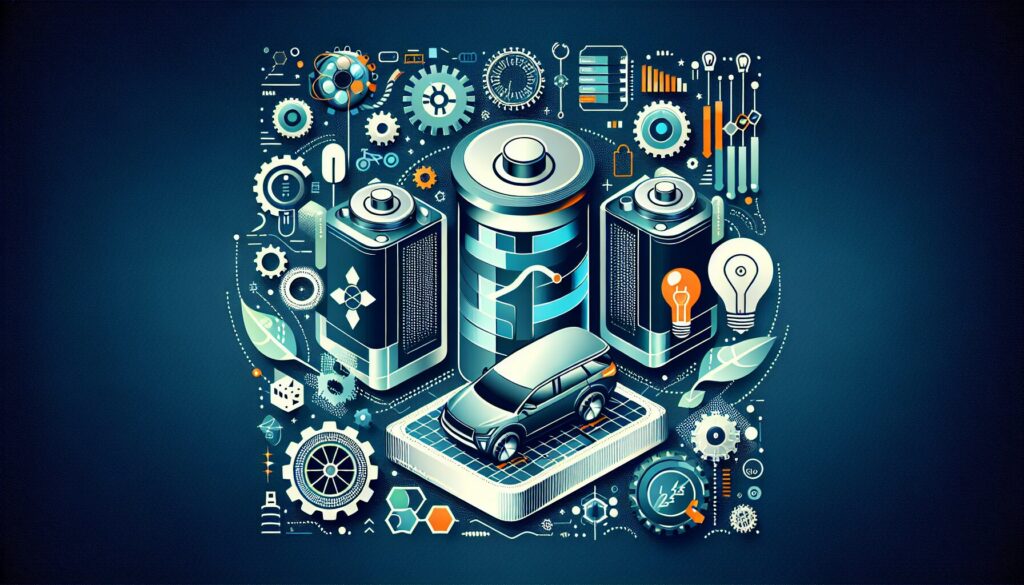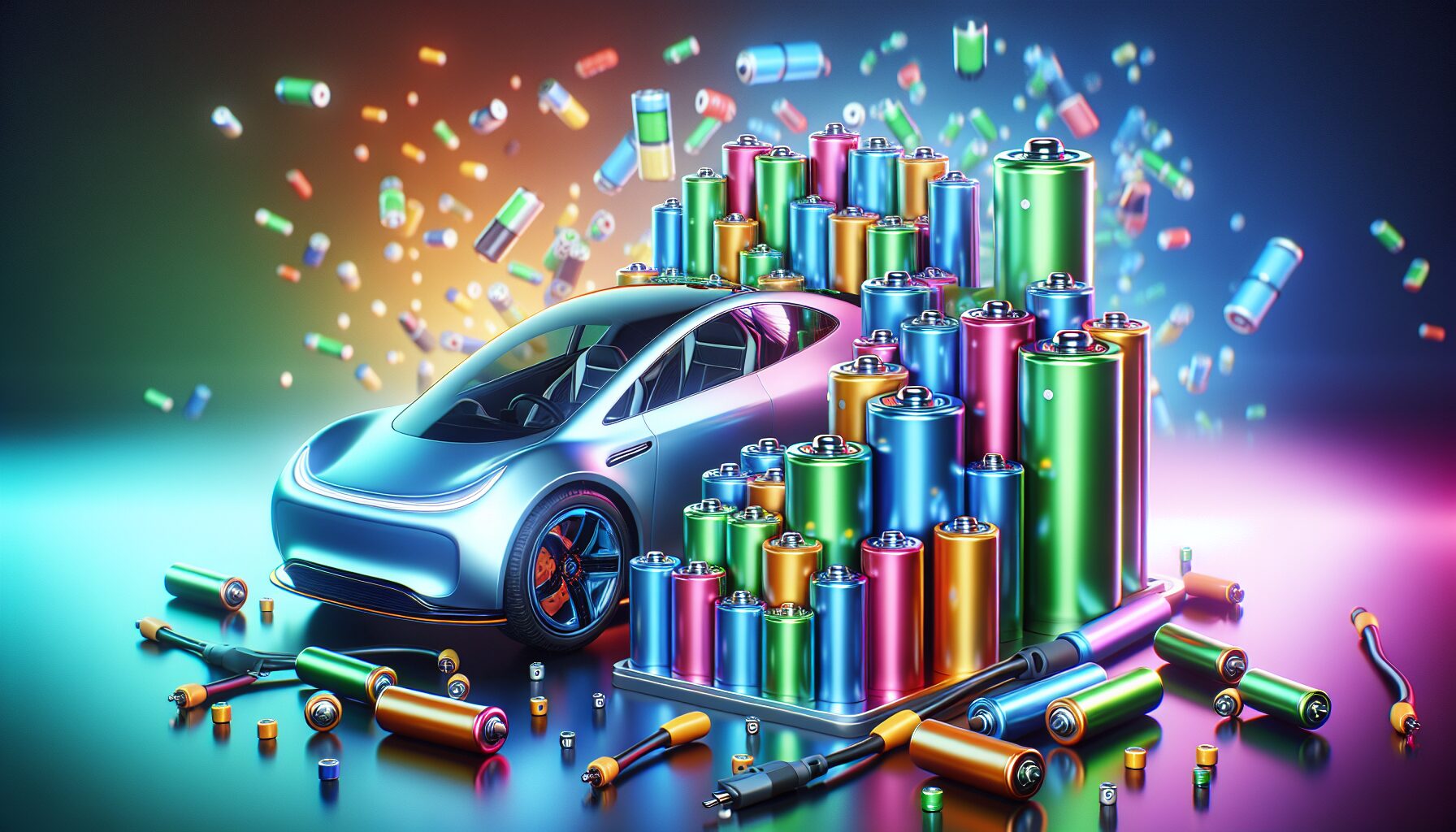Solid-state batteries might sound like something out of a sci-fi movie, but they’re a fascinating and real part of our future. These powerhouses are set to revolutionize electric vehicles (EVs) by providing higher energy density and improved safety. Imagine a world where your car charges faster and travels further on a single charge. That’s the promise of solid-state technology. Unlike traditional lithium-ion batteries, solid-state versions use a solid electrolyte instead of a liquid one. This change helps prevent the growth of lithium dendrites, which can cause short circuits. Materials like garnet-based solid electrolytes and sulfide glass-ceramic conductors are at the heart of this innovation. I remember reading about Toyota’s research in this area and feeling genuinely excited about the future of EVs. It’s impressive how companies are pushing the boundaries to create more efficient and safer batteries. Toyota
How Solid-State Batteries Work
Imagine you’re sipping a warm cup of chai and diving into the world of electric cars. Have you ever wondered how these futuristic vehicles keep running without a drop of petrol? It’s all about the magic happening inside those solid-state batteries! Now, let’s unravel how these powerhouses work, and I’ll sprinkle in a personal story to make it relatable.
So, picture this: a few months ago, I was tinkering with my electric car, and I couldn’t help but marvel at the wonders of solid-state technology. The heart of this innovation lies in replacing the liquid electrolyte found in traditional lithium-ion batteries with a solid material. This change eliminates the pesky issue of lithium dendrite formation. Dendrites are like tiny, unwanted tree branches that can cause short circuits. With solid electrolytes, these dendrites are suppressed, making the battery much safer and longer-lasting.
Another fascinating aspect is the formation of the solid electrolyte interphase (SEI). This is a protective layer that forms on the surface of the anode. It ensures the battery operates efficiently over time. While traditional batteries struggle to maintain a stable SEI, solid-state batteries have a natural advantage here. The solid electrolyte provides a more uniform surface, reducing degradation and enhancing performance.
The Role of Garnet-Based Solid Electrolytes
Now, let me share a little about garnet-based solid electrolytes. These materials are gaining popularity because of their high ionic conductivity and stability. I remember discussing this with a friend who works at National University of Sciences & Technology. He mentioned how these electrolytes enable faster charging and increased energy density. This means you can drive longer distances without frequent recharging stops. Plus, the solid structure helps in resisting thermal runaway, a condition where the battery overheats. It’s like having an inbuilt safety net!
Furthermore, solid-state batteries are paving the way for lighter and more compact designs. This is because they don’t need as many protective components. Imagine packing more power into the same space, or even fitting a battery into smaller vehicles like tuk-tuks, which are super popular in Pakistan. This innovation could revolutionize urban mobility here!
In a nutshell, the transition to solid-state batteries in electric vehicles is a game-changer. It promises safety, efficiency, and sustainability. As we continue to innovate, the roads of Pakistan might soon be buzzing with cars powered by this incredible technology.
Benefits of Solid-State Batteries in Electric Cars

Imagine driving from Karachi to Lahore on a single charge without a hitch. That’s becoming a reality thanks to solid-state batteries in electric vehicles! These powerhouses are a game-changer, offering longer ranges and faster charging times. But how do they work, and why are they so beneficial? Let me dive into some fascinating details.
First off, solid-state batteries replace the liquid electrolytes found in traditional lithium-ion batteries with a solid electrolyte. This shift is significant because it substantially reduces the risk of battery fires. The solid electrolyte acts as a firewall, preventing the formation of dendrites. These pesky, needle-like structures can cause short circuits. So, if you’re cruising down the streets of Islamabad, you can feel a bit safer knowing your battery is less likely to overheat.
Efficiency and Longevity
Another major perk is efficiency. Solid-state batteries can house a lithium metal anode, which offers a higher energy density. This means more energy is packed into a smaller space, allowing your car to travel further on a single charge. It’s like having a bigger fuel tank, but without the extra weight! Furthermore, these batteries have a longer lifespan. They can withstand more charge and discharge cycles before their capacity begins to dwindle. So, your trips to the charging station in Lahore could be less frequent over the years.
Now, let’s talk about charging speed. Solid-state technology can significantly cut down charging times. Imagine stopping for a quick chai break, and by the time you’re done, your car’s ready to hit the road again. This speed is thanks to the solid electrolyte interface, which allows ions to move more freely and rapidly during charging. It’s the kind of convenience that makes road trips across Pakistan’s stunning landscapes even more enjoyable.
Moreover, solid-state batteries could be a win for the environment. Since these batteries are more efficient, they require fewer raw materials. Organizations like Pakistan Council of Renewable Energy Technologies are likely to appreciate this shift towards greener energy solutions. According to BBC, reducing reliance on rare earth materials is crucial for sustainable battery production.
As technology advances, the potential for solid-state batteries in electric cars is vast. With benefits like increased safety, efficiency, and environmental friendliness, they’re set to revolutionize how we travel. So, whether you’re commuting to work or planning a getaway in the Northern Areas, these batteries promise a smoother and greener ride.
Current Challenges and Limitations

Ah, the world of solid-state batteries! Isn’t it fascinating how this technology could revolutionize electric cars? But let’s dive into some of the challenges that keep it from hitting the roads in Pakistan just yet. One of the biggest hurdles is optimizing the lithium anode. You see, lithium is a bit of a diva. It’s got this tendency to form dendrites, little needle-like structures that can pierce through the battery, causing short circuits. Imagine trying to make a perfect biryani, but the rice always clumps together—that’s kind of what dendrite formation is like for battery developers! It’s a tricky problem that requires a lot of patience and expertise to mitigate.
Another challenge is the solid electrolyte interface, or SEI layer. It’s like the protective layer on your smartphone screen. It has to be just right to work efficiently. If it’s too thick, it hampers performance. If it’s too thin, well, you’re back to the dendrite problem. Developers are continuously tweaking this to find the sweet spot. And then there’s the issue of manufacturing at scale. The materials used in solid-state batteries aren’t as straightforward to produce in large quantities as traditional lithium-ion batteries. Scaling up production while maintaining quality is a significant challenge. It’s like trying to make a giant batch of your grandma’s secret chai recipe and getting it just right every time.
Environmental and Economic Factors
Environmental factors also play a big role. In a country like Pakistan, where temperatures can soar, the thermal stability of these batteries is crucial. They have to withstand the heat without losing efficiency. This involves advanced thermal management systems, which can be costly. Speaking of costs, solid-state batteries are currently more expensive to produce compared to their lithium-ion counterparts. This price tag makes it hard for them to be a viable option for the mass market. Companies like Toyota and QuantumScape are investing heavily in research, hoping to crack the code and make these batteries more affordable.
Finally, there’s the question of infrastructure. For electric vehicles to become mainstream, you need a network of charging stations. In Pakistan, this is still developing. Without widespread charging points, even the most advanced battery technology won’t get far. So, while the potential is enormous, these challenges need addressing. Overcoming them will take innovation, investment, and time, but the future looks promising!
Recent Developments and Innovations

Just the other day, I was reading about the latest buzz in the world of electric cars and felt an electric jolt of excitement. If you’re as curious as I am about the future of automobiles, you’ll be thrilled to know that solid-state batteries are making waves with their innovative advancements. These batteries are game-changers, especially for us in Pakistan, where the need for efficient, reliable, and sustainable energy sources is more pressing than ever.
One of the most exciting developments is in the suppression of lithium dendrites. These pesky little formations can cause short circuits in traditional lithium-ion batteries. But with solid-state technology, we’ve got a hero in ceramic electrolyte materials. These materials are like guardians that keep those dendrites at bay, ensuring longer-lasting and safer batteries. Imagine driving your electric car from Karachi to Islamabad with fewer worries about battery reliability.
Furthermore, researchers are diving deep into fast ion-conducting polymers. These polymers allow ions to move more freely, which means faster charging times. Think about it: a quick cup of chai at a roadside dhaba might be all the time you need to recharge your car. This kind of innovation is not just about convenience; it’s about transforming the way we think about electric mobility.
Collaborations and Breakthroughs
A lot of this progress is thanks to collaborations between major companies and research institutions. For instance, Toyota Research Institute and Samsung SDI are investing heavily in this technology. They’ve joined forces to push the boundaries of what’s possible with solid-state batteries. Their goal? To create a battery that not only charges faster but also lasts longer and operates safely in a wide range of temperatures.
This is particularly relevant for us here in Pakistan, where temperature extremes can be challenging. Imagine a car battery that performs just as well in the scorching heat of Lahore as it does in the cool valleys of Murree. These innovations could make electric vehicles a more viable and attractive option for more people across the country.
It’s hard not to get caught up in the excitement of these developments. The potential for solid-state batteries in electric vehicles is enormous. As these technologies continue to evolve, they promise a future of cleaner, more efficient transportation. And that’s something worth getting excited about, don’t you think?
Future Prospects for Solid-State Batteries
Imagine a world where our electric cars charge faster, drive longer, and are safer than ever before. That’s the promise of solid-state batteries! I remember chatting with an engineer friend about how these batteries could revolutionize electric vehicles. The excitement was palpable. You see, these batteries swap out the liquid electrolyte found in traditional lithium-ion batteries for a solid one. This change can enhance electrolyte conductivity and, more importantly, suppress those pesky dendrites that can cause short circuits.
Now, let’s talk about how these solid-state wonders can impact us in Pakistan. The potential is enormous. Our country has been making strides in adopting renewable energy, and these batteries could be a game-changer for electric vehicles. They promise not only increased efficiency but also longer lifespan. This means less frequent replacements and lower costs over time, which is always a win in my book!
Innovations and Challenges
However, we’re still in the early days. Developing these batteries isn’t without its challenges. One of the key issues is finding the right materials. Sulfide-based solid electrolytes are currently leading the charge because of their high ionic conductivity. Yet, they can be tricky to handle and produce at scale. Toyota and Samsung have been at the forefront, investing heavily in research to overcome these hurdles.
Additionally, the cost factor is a big consideration. Initially, these batteries might be more expensive than their traditional counterparts. But as production scales up, costs are expected to come down. It’s a bit like the early days of solar panels. Remember when they were a novelty and priced sky-high? Today, many homes even in Pakistan have them installed on rooftops.
Furthermore, solid-state technology could significantly improve the safety profile of electric vehicles. The risk of battery fires could be minimized, making our roads safer. This is especially important in urban settings where traffic is dense and safety is paramount.
In conclusion, while there are challenges to overcome, the future looks bright for solid-state technology in electric vehicles. With global companies pouring resources into research and development, it’s only a matter of time before we see these batteries becoming a staple in our electric vehicles. Keep an eye on this space; exciting developments are on the horizon!
Conclusion
In essence, the advent of solid-state batteries promises to transform the electric vehicle landscape with enhanced safety, efficiency, and longevity. By replacing liquid electrolytes with solid alternatives, these batteries mitigate the risk of dendrite formation and battery fires, offering a safer and more reliable power source. As they pave the way for faster charging times and longer driving ranges, solid-state batteries are not just a technological breakthrough but also a beacon of hope for sustainable transportation. However, challenges such as material optimization, production scalability, and cost remain. With ongoing research and collaboration among global leaders like Toyota and Samsung, the dream of solid-state-powered vehicles is becoming increasingly tangible. As Pakistan and the world move towards greener alternatives, these innovations hold the potential to redefine mobility. Here’s to a cleaner, longer journey ahead in the realm of electric vehicles!
Continue Exploring
Unlock the hidden wonders of our planet's tiniest creatures and discover how capturing their beauty up close can play a crucial role in protecting biodiversity. Dive into the fascinating world of macro photography and see why it's more than just an art—it's a mission for nature.
Frequently Asked Questions
What are the advantages of solid-state batteries over traditional lithium-ion batteries in electric cars?
Solid-state batteries offer several advantages over traditional lithium-ion batteries, including higher energy density, which allows for longer driving ranges. They are also safer, as they reduce the risk of overheating and catching fire. Additionally, solid-state batteries can potentially support faster charging times, improving the convenience and usability of electric vehicles.
How will solid-state batteries impact the future of electric vehicle technology?
Solid-state batteries are expected to significantly impact the future of electric vehicle technology by providing more efficient and safer energy storage solutions. Their enhanced performance characteristics could lead to lighter and more compact battery packs, contributing to overall vehicle efficiency. This advancement could accelerate the adoption of electric vehicles by addressing current limitations related to range and charging times.
When can we expect solid-state batteries to be available in electric cars on the market?
While solid-state batteries are still in the development phase, several automotive manufacturers are actively working on bringing them to market. Some industry experts predict that the first electric cars equipped with solid-state batteries could be available within the next few years, with widespread adoption expected in the late 2020s. However, this timeline is subject to change based on technological advancements and manufacturing scalability.


Leave a Reply